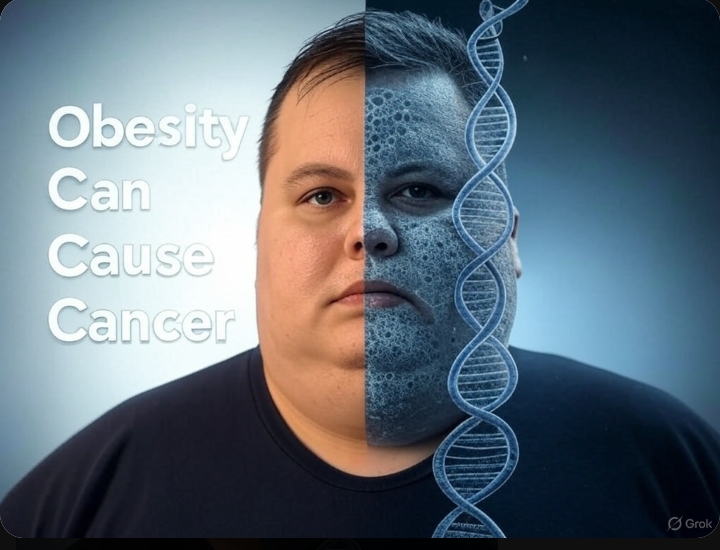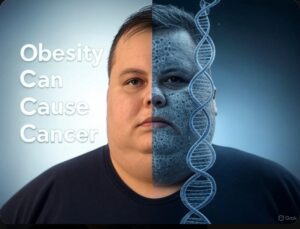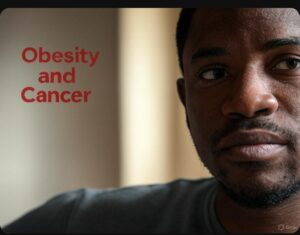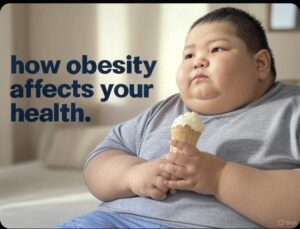Obesity isn’t just about carrying extra pounds—it’s a silent trigger for life-threatening diseases, including cancer. While most people associate obesity with heart disease and diabetes, few realize it’s also a leading preventable cause of cancer.
If you’ve ever wondered:
- “Does being overweight increase cancer risk?”
- “How does body fat contribute to tumor growth?”
- “Can losing weight prevent cancer?”
…you’re in the right place.
In this deep dive, we’ll explore:
✔ The biological mechanisms linking obesity to cancer
✔ Real patient stories—how excess weight led to their diagnosis
✔ Critical mistakes that accelerate risk (most people ignore #3)
✔ Proven strategies to lower your chances of obesity-related cancers
Let’s uncover the truth—and more importantly—how you can protect yourself.
Part 1: The Science of Fat and Cancer—How Obesity Fuels Tumor Growth
- Hormonal Havoc: Estrogen, Insulin, and Cancer Cells
Fat tissue isn’t just passive storage—it’s metabolically active, pumping out hormones that can feed cancer growth:
- Estrogen Overload (Breast & Endometrial Cancer):
Excess fat increases estrogen production, which can trigger abnormal cell division in hormone-sensitive tissues.
Fact: Obese women have 2-4x higher risk of endometrial cancer. - Insulin Resistance (Colon, Pancreatic, Liver Cancer):
Obesity leads to chronically high insulin levels, which act like fertilizer for tumors.
Shocking stat: Obese individuals have 30% higher risk of colorectal cancer.
- Chronic Inflammation: The Silent Cancer Igniter
Fat cells release inflammatory chemicals (like cytokines) that:
- Damage DNA over time
- Create an environment where mutations thrive
- Suppress the immune system’s ability to kill cancerous cells
Example: Obese individuals with long-term inflammation are more likely to develop liver and kidney cancers.
- The 13 Cancers Linked to Obesity (CDC-Confirmed List)
Research confirms obesity increases risk for:
| High-Risk Cancers | Increased Risk |
| Breast (postmenopausal) | 20-40% higher |
| Colorectal | 30% higher |
| Pancreatic | 50% higher |
| Endometrial | 2-4x higher |
Source: National Cancer Institute
Part 2: Real Stories—How Obesity Led to Their Cancer Diagnosis
Case Study #1: Linda’s Breast Cancer Wake-Up Call
Linda, 48, had been obese since her 30s. Despite family warnings, she assumed her weight was “just genetics.” At 46, she was diagnosed with estrogen-receptor-positive breast cancer.
Her oncologist explained:
“Your excess fat tissue was producing estrogen non-stop, feeding the tumor’s growth.”
Key Lesson: Obesity-related cancers often develop silently—don’t wait for symptoms.
Case Study #2: James’s Colorectal Cancer from a Sedentary Life
James, 55, worked a desk job for 20 years, surviving on fast food. At 54, he was diagnosed with stage 3 colon cancer.
His surgeon’s blunt truth:
“Your high insulin levels from obesity created the perfect storm for cancerous polyps.”
Key Lesson: Men with obesity face higher GI cancer risks—screening is crucial.
Part 3: 5 Deadly Mistakes That Skyrocket Your Risk
Are you making these common (but preventable) errors?
Mistake #1: “I’m Big-Boned, Not Obese” (Denial)
- BMI over 30 = obesity, no matter frame size.
- Fix: Calculate your BMI (free NIH calculator [link]).
Mistake #2: Avoiding Cancer Screenings
- Obese adults need earlier/more frequent tests (colonoscopy, mammogram).
- Fix: Ask your doctor for a personalized screening plan.
Mistake #3: Yo-Yo Dieting Instead of Sustainable Loss
- Rapid weight loss triggers inflammation.
- Fix: Aim for 1-2 lbs/week loss via balanced habits.
Mistake #4: Overdoing Processed “Diet” Foods
- Artificial sweeteners may worsen insulin resistance.
- Fix: Eat whole foods (fiber, lean protein, healthy fats).
Mistake #5: Sitting All Day (Even If You Exercise)
- Prolonged sitting increases cancer risk independently.
- Fix: Set a 30-minute movement alarm.
Part 4: Your Action Plan—How to Lower Risk Starting Today
Step 1: The 5% Rule (Small Loss, Big Impact)
Losing just 5-10% of body weight can:
- Lower estrogen & insulin levels
- Reduce inflammation
- Example: A 200-lb person benefits from losing 10-20 lbs.
Step 2: Anti-Cancer Eating Pattern
Follow these science-backed food rules:
- Fill ½ your plate with colorful veggies (fiber blocks excess estrogen)
- Choose lean proteins (chicken, fish, legumes over processed meats)
- Healthy fats only (avocados, nuts, olive oil—not fried foods)
Step 3: Exercise That Fights Cancer
- 150 mins/week of moderate activity (brisk walking counts!)
- Strength training 2x/week (muscle burns glucose, lowering insulin)
Step 4: Sleep & Stress Management
- Poor sleep disrupts hunger hormones (leptin/ghrelin).
- In addition, African Lean Belly Supplement is a wonderful supplement that helps reduce belly fat and promote slimming body fat, I will attach the link below to place your order
Final Thoughts: Your Body, Your Defense
Obesity-related cancers aren’t inevitable—they’re often preventable with lifestyle changes. Linda and James didn’t know their risks until it was too late. You have the power to rewrite your story.
Your Next Steps:
- Calculate your BMI [NIH Tool Link]
- Schedule a cancer screening (esp. if 40+ or high BMI)
- Pick ONE healthy habit to start this week (comment below!)
Knowledge is power—share this with someone who needs to see it.




